Abstract
OBJECTIVES: This study examined cross sectionally the physical activity patterns associated with low, moderate, and high levels of cardiorespiratory fitness. METHODS: Physical activity was assessed by questionnaire in a clinic population of 13,444 men and 3972 women 20 to 87 years of age. Estimated energy expenditure (kcal.wk-1) and volume (min.wk-1) of reported activities were calculated among individuals at low, moderate, and high fitness levels (assessed by maximal exercise tests). RESULTS: Average leisure time energy expenditures of 525 to 1650 kcal.wk-1 for men and 420 to 1260 kcal.wk-1 for women were associated with moderate to high levels of fitness. These levels of energy expenditure can be achieved with a brisk walk of approximately 30 minutes on most days of the week. In fact, men in the moderate and high fitness categories walked between 130 and 138 min.wk-1, and women in these categories walked between 148 and 167 min.wk-1. CONCLUSIONS: Most individuals should be able to achieve these physical activity goals and thus attain a cardiorespiratory fitness level sufficient to result in substantial health benefits.
Full text
PDF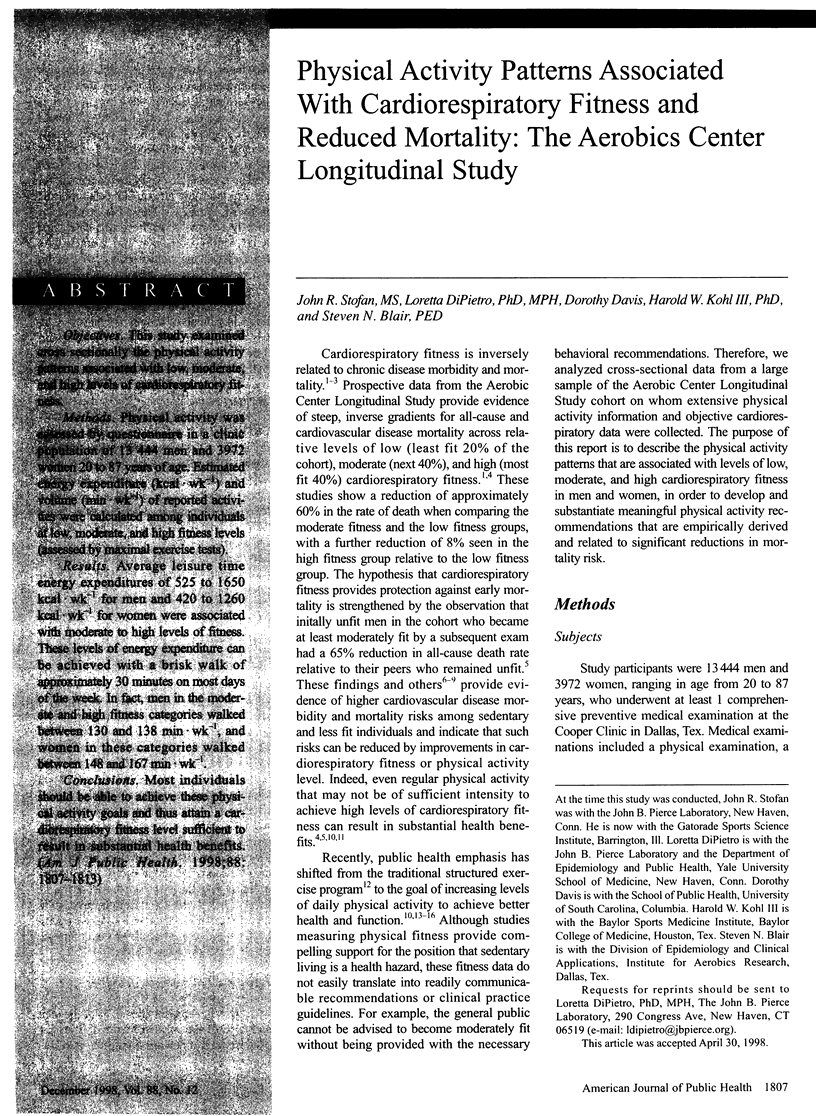
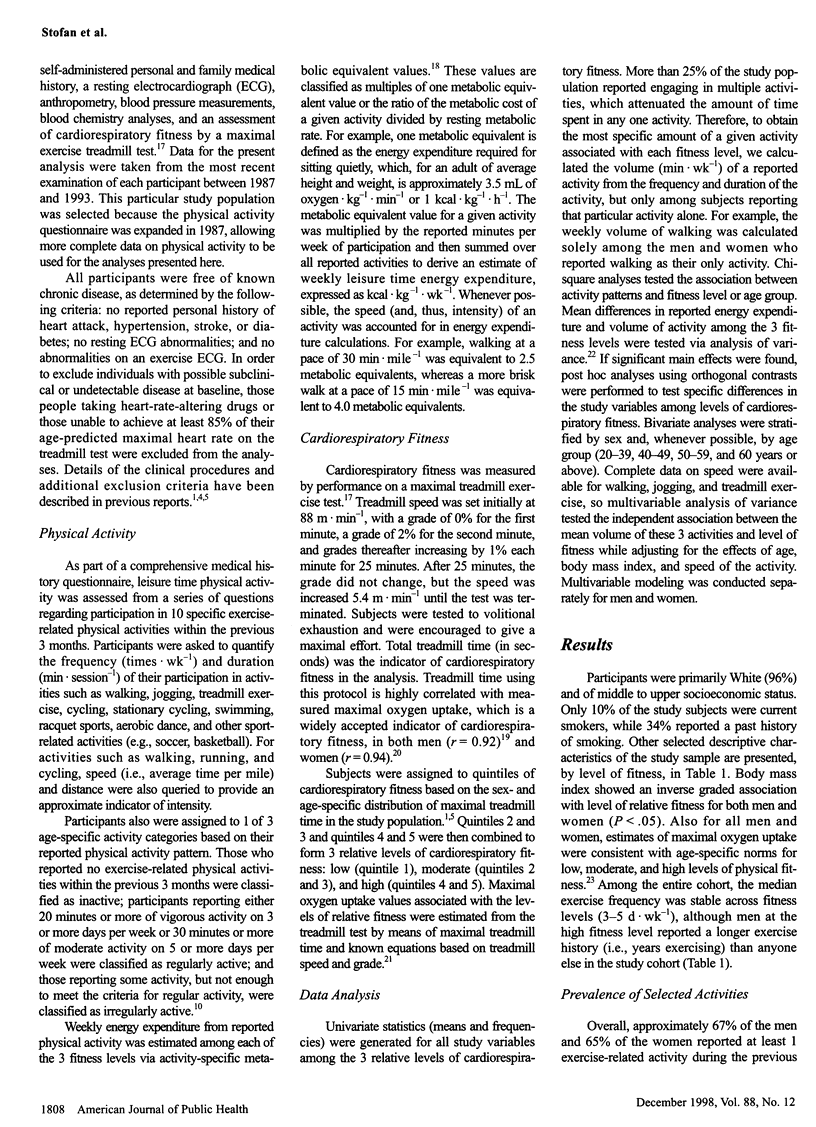
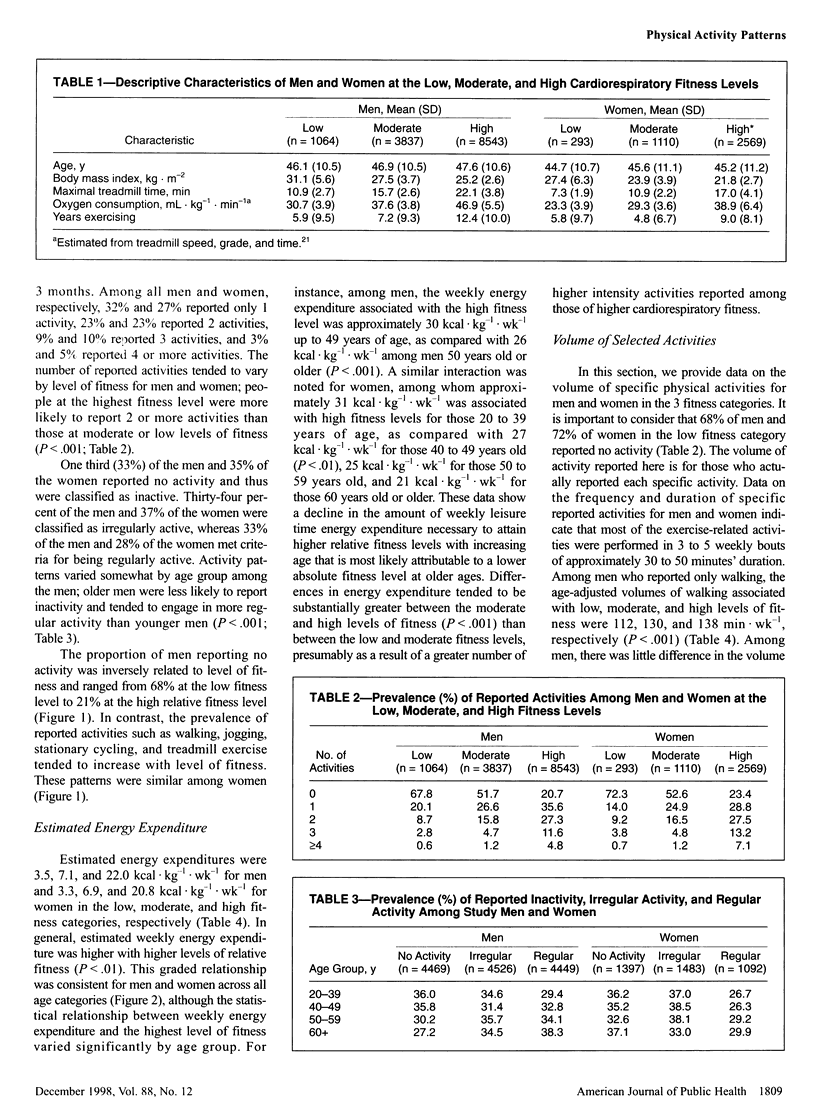
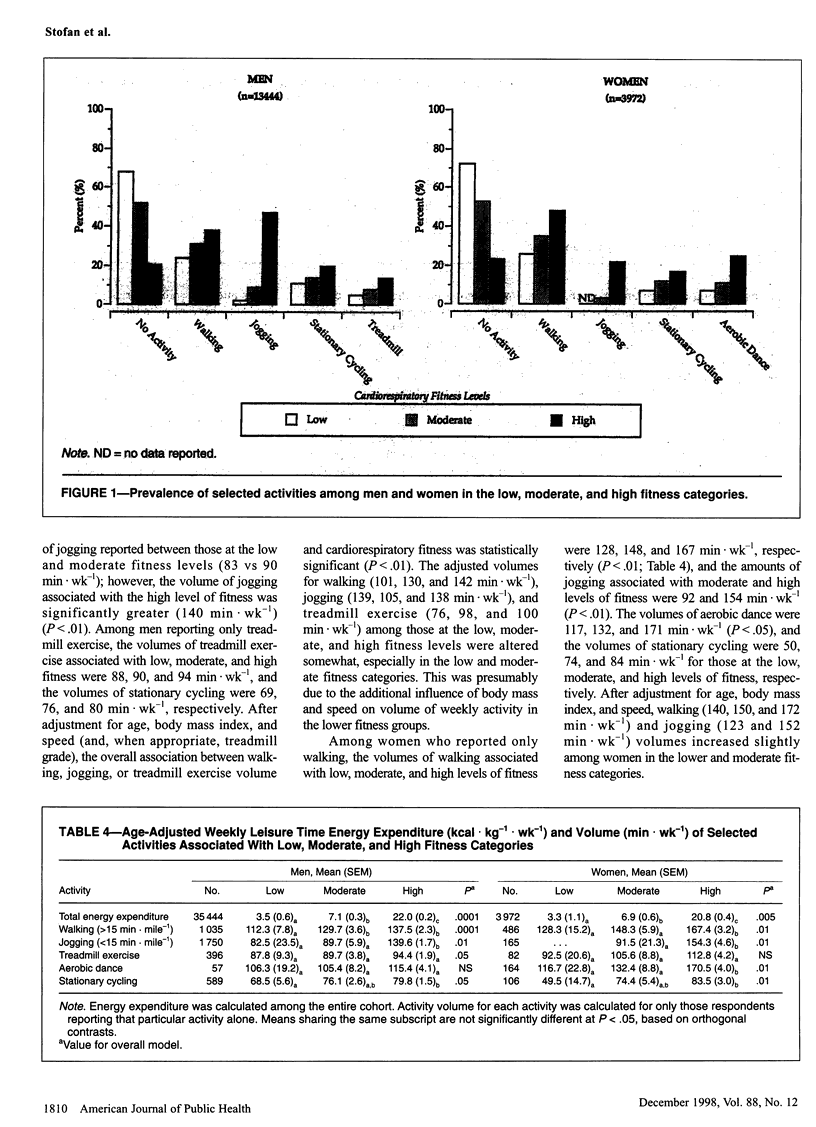
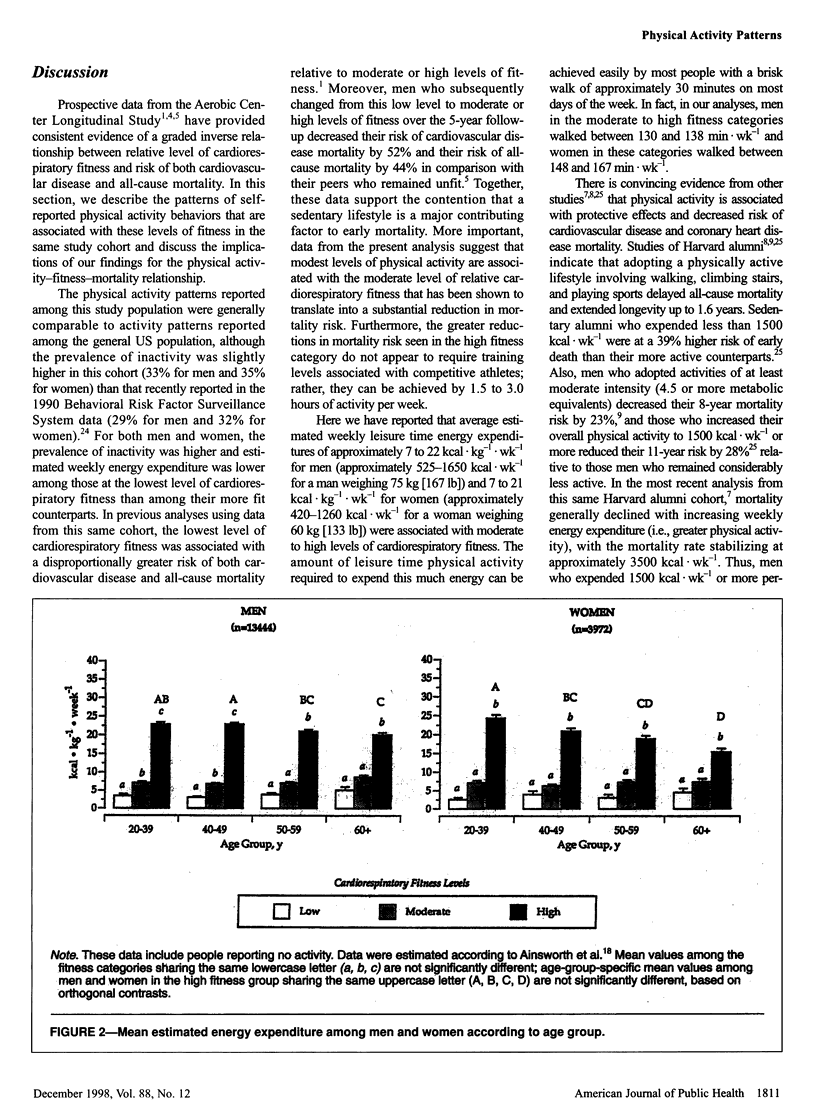
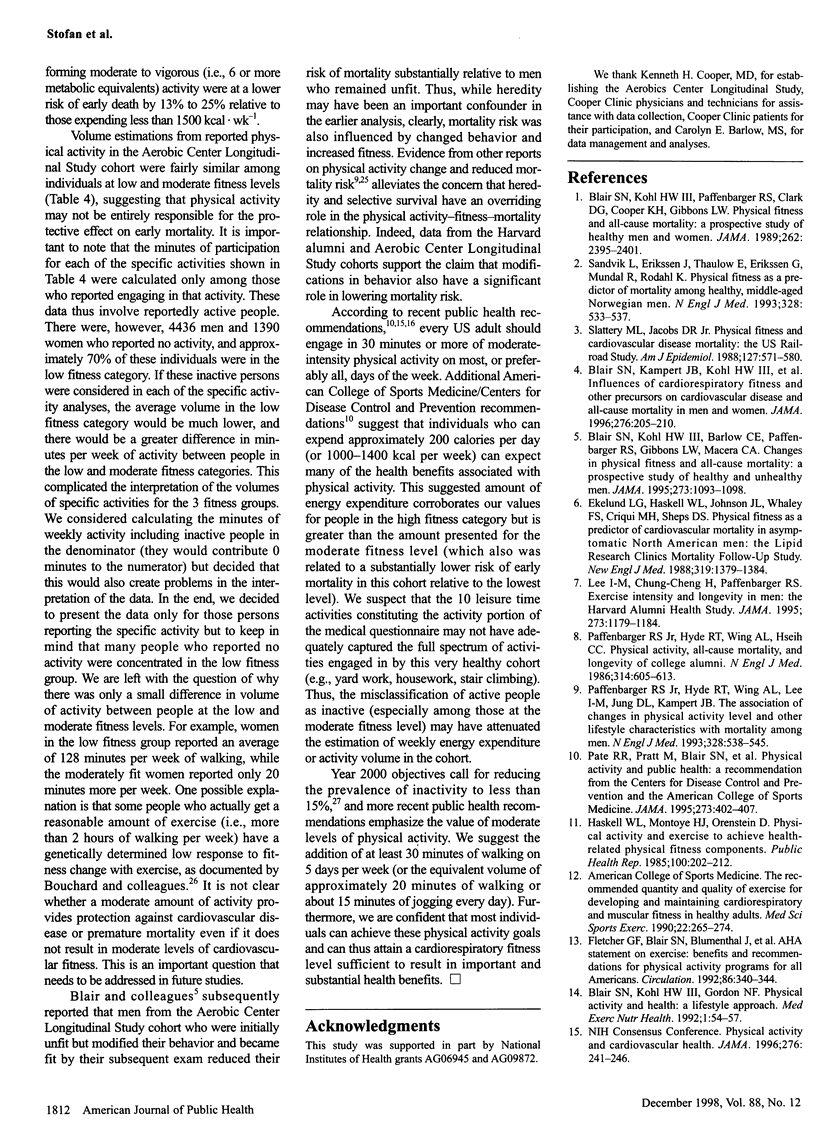
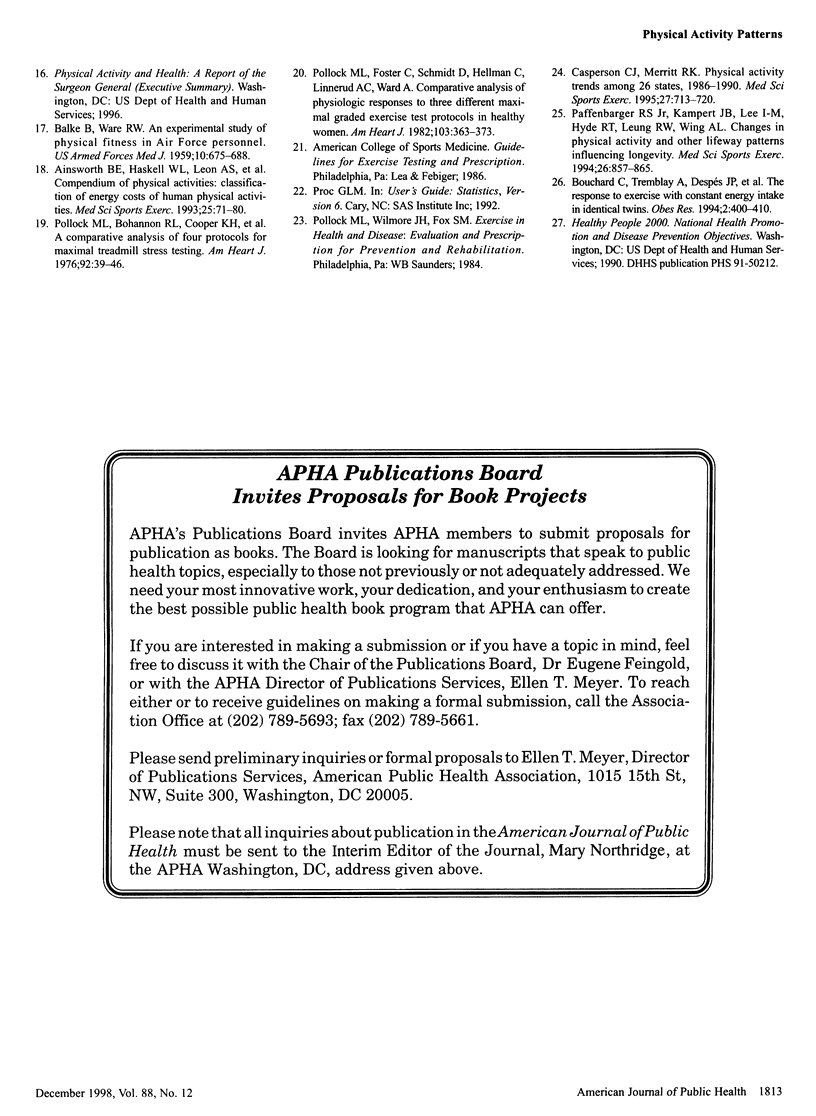
Selected References
These references are in PubMed. This may not be the complete list of references from this article.
- Ainsworth B. E., Haskell W. L., Leon A. S., Jacobs D. R., Jr, Montoye H. J., Sallis J. F., Paffenbarger R. S., Jr Compendium of physical activities: classification of energy costs of human physical activities. Med Sci Sports Exerc. 1993 Jan;25(1):71–80. doi: 10.1249/00005768-199301000-00011. [DOI] [PubMed] [Google Scholar]
- BALKE B., WARE R. W. An experimental study of physical fitness of Air Force personnel. U S Armed Forces Med J. 1959 Jun;10(6):675–688. [PubMed] [Google Scholar]
- Blair S. N., Kampert J. B., Kohl H. W., 3rd, Barlow C. E., Macera C. A., Paffenbarger R. S., Jr, Gibbons L. W. Influences of cardiorespiratory fitness and other precursors on cardiovascular disease and all-cause mortality in men and women. JAMA. 1996 Jul 17;276(3):205–210. [PubMed] [Google Scholar]
- Blair S. N., Kohl H. W., 3rd, Barlow C. E., Paffenbarger R. S., Jr, Gibbons L. W., Macera C. A. Changes in physical fitness and all-cause mortality. A prospective study of healthy and unhealthy men. JAMA. 1995 Apr 12;273(14):1093–1098. [PubMed] [Google Scholar]
- Blair S. N., Kohl H. W., 3rd, Paffenbarger R. S., Jr, Clark D. G., Cooper K. H., Gibbons L. W. Physical fitness and all-cause mortality. A prospective study of healthy men and women. JAMA. 1989 Nov 3;262(17):2395–2401. doi: 10.1001/jama.262.17.2395. [DOI] [PubMed] [Google Scholar]
- Bouchard C., Tremblay A., Després J. P., Thériault G., Nadeau A., Lupien P. J., Moorjani S., Prudhomme D., Fournier G. The response to exercise with constant energy intake in identical twins. Obes Res. 1994 Sep;2(5):400–410. doi: 10.1002/j.1550-8528.1994.tb00087.x. [DOI] [PubMed] [Google Scholar]
- Caspersen C. J., Merritt R. K. Physical activity trends among 26 states, 1986-1990. Med Sci Sports Exerc. 1995 May;27(5):713–720. [PubMed] [Google Scholar]
- Ekelund L. G., Haskell W. L., Johnson J. L., Whaley F. S., Criqui M. H., Sheps D. S. Physical fitness as a predictor of cardiovascular mortality in asymptomatic North American men. The Lipid Research Clinics Mortality Follow-up Study. N Engl J Med. 1988 Nov 24;319(21):1379–1384. doi: 10.1056/NEJM198811243192104. [DOI] [PubMed] [Google Scholar]
- Fletcher G. F., Blair S. N., Blumenthal J., Caspersen C., Chaitman B., Epstein S., Falls H., Froelicher E. S., Froelicher V. F., Pina I. L. Statement on exercise. Benefits and recommendations for physical activity programs for all Americans. A statement for health professionals by the Committee on Exercise and Cardiac Rehabilitation of the Council on Clinical Cardiology, American Heart association. Circulation. 1992 Jul;86(1):340–344. doi: 10.1161/01.cir.86.1.340. [DOI] [PubMed] [Google Scholar]
- Haskell W. L., Montoye H. J., Orenstein D. Physical activity and exercise to achieve health-related physical fitness components. Public Health Rep. 1985 Mar-Apr;100(2):202–212. [PMC free article] [PubMed] [Google Scholar]
- Lee I. M., Hsieh C. C., Paffenbarger R. S., Jr Exercise intensity and longevity in men. The Harvard Alumni Health Study. JAMA. 1995 Apr 19;273(15):1179–1184. [PubMed] [Google Scholar]
- Paffenbarger R. S., Jr, Hyde R. T., Wing A. L., Hsieh C. C. Physical activity, all-cause mortality, and longevity of college alumni. N Engl J Med. 1986 Mar 6;314(10):605–613. doi: 10.1056/NEJM198603063141003. [DOI] [PubMed] [Google Scholar]
- Paffenbarger R. S., Jr, Hyde R. T., Wing A. L., Lee I. M., Jung D. L., Kampert J. B. The association of changes in physical-activity level and other lifestyle characteristics with mortality among men. N Engl J Med. 1993 Feb 25;328(8):538–545. doi: 10.1056/NEJM199302253280804. [DOI] [PubMed] [Google Scholar]
- Paffenbarger R. S., Jr, Kampert J. B., Lee I. M., Hyde R. T., Leung R. W., Wing A. L. Changes in physical activity and other lifeway patterns influencing longevity. Med Sci Sports Exerc. 1994 Jul;26(7):857–865. [PubMed] [Google Scholar]
- Pate R. R., Pratt M., Blair S. N., Haskell W. L., Macera C. A., Bouchard C., Buchner D., Ettinger W., Heath G. W., King A. C. Physical activity and public health. A recommendation from the Centers for Disease Control and Prevention and the American College of Sports Medicine. JAMA. 1995 Feb 1;273(5):402–407. doi: 10.1001/jama.273.5.402. [DOI] [PubMed] [Google Scholar]
- Pollock M. L., Bohannon R. L., Cooper K. H., Ayres J. J., Ward A., White S. R., Linnerud A. C. A comparative analysis of four protocols for maximal treadmill stress testing. Am Heart J. 1976 Jul;92(1):39–46. doi: 10.1016/s0002-8703(76)80401-2. [DOI] [PubMed] [Google Scholar]
- Pollock M. L., Foster C., Schmidt D., Hellman C., Linnerud A. C., Ward A. Comparative analysis of physiologic responses to three different maximal graded exercise test protocols in healthy women. Am Heart J. 1982 Mar;103(3):363–373. doi: 10.1016/0002-8703(82)90275-7. [DOI] [PubMed] [Google Scholar]
- Sandvik L., Erikssen J., Thaulow E., Erikssen G., Mundal R., Rodahl K. Physical fitness as a predictor of mortality among healthy, middle-aged Norwegian men. N Engl J Med. 1993 Feb 25;328(8):533–537. doi: 10.1056/NEJM199302253280803. [DOI] [PubMed] [Google Scholar]
- Slattery M. L., Jacobs D. R., Jr Physical fitness and cardiovascular disease mortality. The US Railroad Study. Am J Epidemiol. 1988 Mar;127(3):571–580. doi: 10.1093/oxfordjournals.aje.a114832. [DOI] [PubMed] [Google Scholar]


